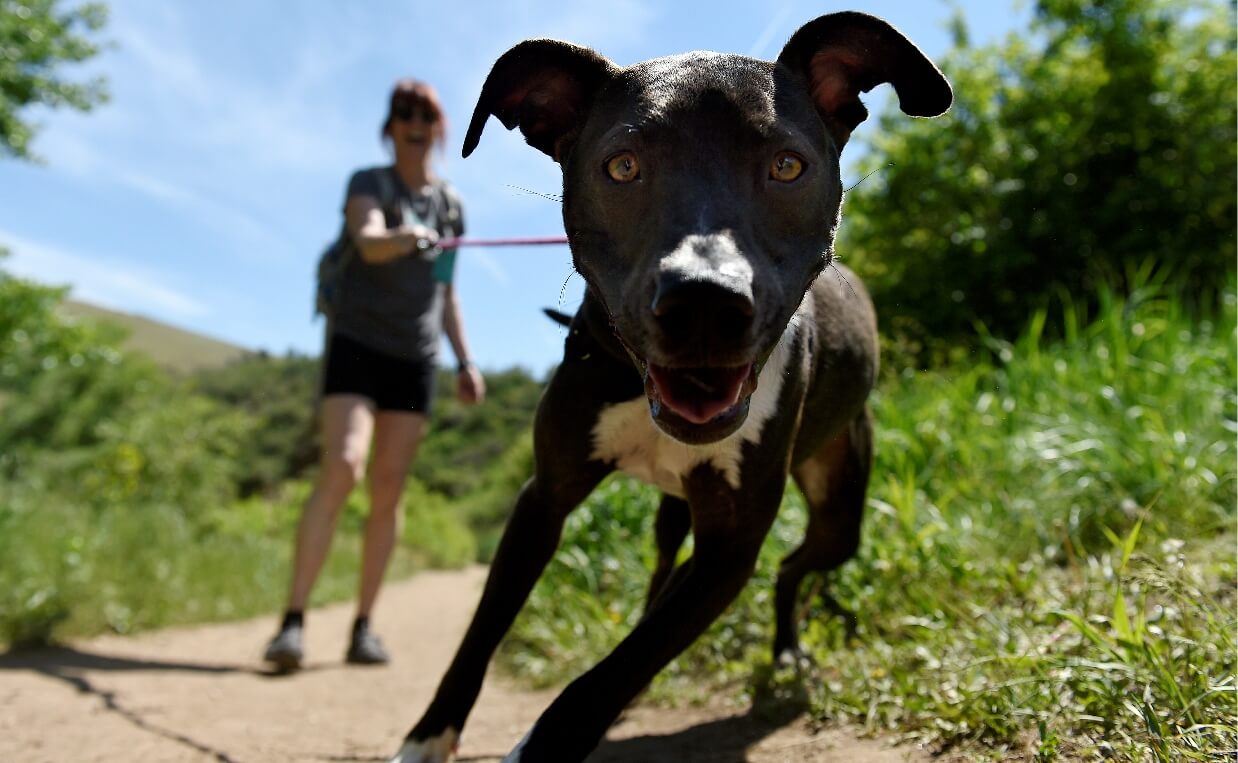
Hiking is a great way to relax and enjoy nature. Have you ever wondered if you could take your dog hiking with you? Most of the time, for most dogs, the answer is an enthusiastic yes! Not only is it possible, but it’s a good idea too! Like other forms of exercise, hiking comes with lots of health benefits, not just for you but for your fur buddy too.
Hiking is good for most dogs, but what about your dog? Keep reading for details about how hiking provides both physical and mental exercise for your dog. And find out below when hiking isn’t good for your dog.
Why Hiking is Good for Dogs
Whether you’re exploring a new trail or following your tried-and-true neighborhood loop, taking regular walks or hikes with your dog can have many positive effects on your dog’s health. Here are a few:
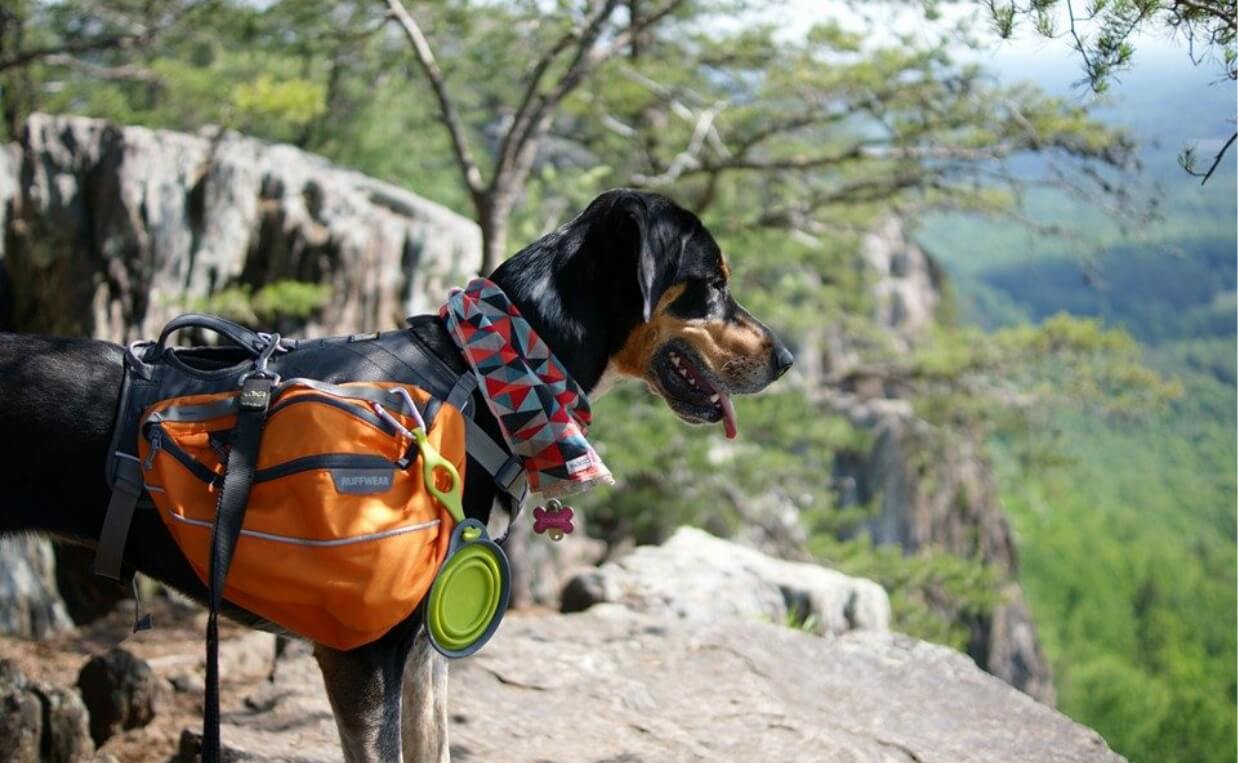
Hiking Increases Your Dog’s Physical Abilities
-
Exercise helps maintain your dog’s weight
Obesity in dogs is an epidemic. Of course, diet plays an important role in weight management, but exercise also is a factor. Many dogs in the U.S. do not receive enough exercise. If your dog has been a couch potato for a long time, be sure to consult your veterinarian before you take your dog on long hikes over mixed terrain.
-
Consider an exercise plan
Make sure your dog can walk comfortably around your neighborhood or neighborhood park before you hit the hiking trails. Increase the distance and intensity of any exercise slowly over time. Just like we risk injury if we over do it, your dog may need training before he or she is ready for a long hike.
-
Consider your dog’s age
Age is an important factor when it comes to exercise. Puppies can’t handle too much exercise, especially large-breed puppies, as over-exercising could cause joint and bone problems. Some veterinarians recommend you take your puppy’s age in months and then multiply it by five to work out how many minutes your puppy can walk for each session. So if your puppy is two months old, he or she should take a 10 minute walk. This is based on an average of two walks per day. This is a generalization. Other factors, such as breed, size, and temperament of your puppy should be taken into account. If you’re unsure how long to walk your puppy, consult your veterinarian.

-
Consider your dog’s health concerns
In addition to the age of your dog, you need to consider any health concerns he or she has. A dog with arthritis or joint problems will need special consideration. Additionally, short-faced (brachycephalic) dogs (like boxers, bulldogs, French bulldogs, Cavalier King Charles Spaniels, Shih Tzus, Boston terriers, mastiffs and pugs) may not be able to hike far due to breathing issues. A dog with heart disease should not be over exercised either.
But many dogs with health concerns can benefit from regular easy, slow, short hikes. Just be sure to consult your veterinarian before you get started on any exercise routine for a dog with a health condition.
-
Consider your dog’s paws
If you are able to hike on soft, grassy trails, you don’t need to worry about your dog’s paws. But if you’re hiking on rough surfaces, hot or icy asphalt, hot desert sand, cold deep snow or rocky, sharp surfaces, you should consider boots for your dog.
Read more: Does Your Dog Need Shoes for Paw Protection?
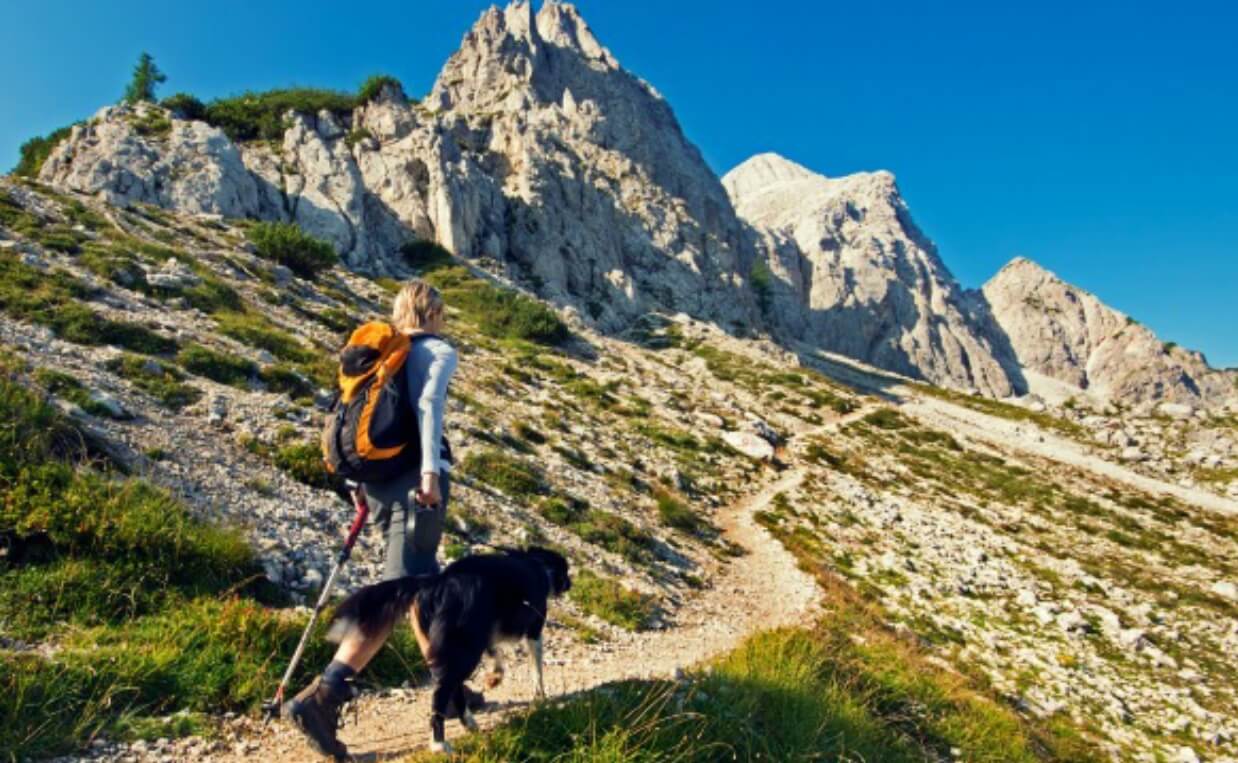
Hiking Gives Your Dog Mental Stimulation
Even if your dog received no physical benefits from hiking, there would still be plenty of mental benefits for your dog. So even if your dog can’t hike far or fast, there are still clear benefits hiking is good for him or her.
-
Your dog loves new smells
Dogs have a phenomenal sense of smell, at least 40 times better than humans. Dogs are able to smell something at one part per trillion. If a scent is in the air or on objects, dogs will smell it.
What this means is taking your dog for a hike is like taking a child to a child’s museum. There is so much to smell just by sniffing all the scents on the trail. The scents on a hiking trail are often much different than in a city neighborhood, giving your dog a wonderful opportunity to explore more of their world.
-
Your dog enjoys learning
Every time you take your dog on a hike, you are teaching or reinforcing what you want him or her to do or not do. If you bring treats along and spend some time during your hike intentionally training your dog, he or she will improve skills and the bond between the two of you will deepen.
Good commands to work on during a hike include:
- Sit
- Stay
- Wait
- Not pulling on the leash
- Heel on leash
- Watch me (when there are distractions)
Read more: 5 Things You Can Easily Forget When Training Your Dog

When Hiking is Bad for Dogs
Just like any activity, there are times when hiking is not good for dogs.
-
Extreme temperatures
Dogs don’t do well in hot hiking conditions. If you are hiking during summer months, make sure you give your dog plenty of time to rest and cool off in the shade. And be sure to keep your dog hydrated. Hike in the early morning or evening when the temperature is cooler. If you must hike during the hottest part of the day, consider leaving your dog home or bringing them to daycare. Heatstroke can be deadly.
Alternatively, freezing temperatures can also be hazardous. For dog who aren’t acclimated to the cold, especially if they don’t have a thick winter coat, winter hikes should be short. Some days may be too cold to hike at all. However, there are ways to help your dog succeed on hikes in cold temperatures. Check out this blog post on 7 Indispensable Tips for Hiking with Your Dog in Winter.
-
Health concerns
As mentioned above, please take any health issues your dog has into consideration. Dogs with heart disease, joint, feet or back issues may not be good candidates for long hikes. Sometimes hiking with dogs with these types of issues may cause more harm than good. Make sure you talk with your veterinarian about any health issues your dog has before hitting the trails.
-
Trail risks
Be aware there are risks when out on hiking trails. Make sure your dog has flea and tick protection before going hiking. And be aware of wildlife. Dogs have been known to get into confrontations with many types of wildlife, including deer, coyotes, bears, rabbits, porcupines, and skunks.
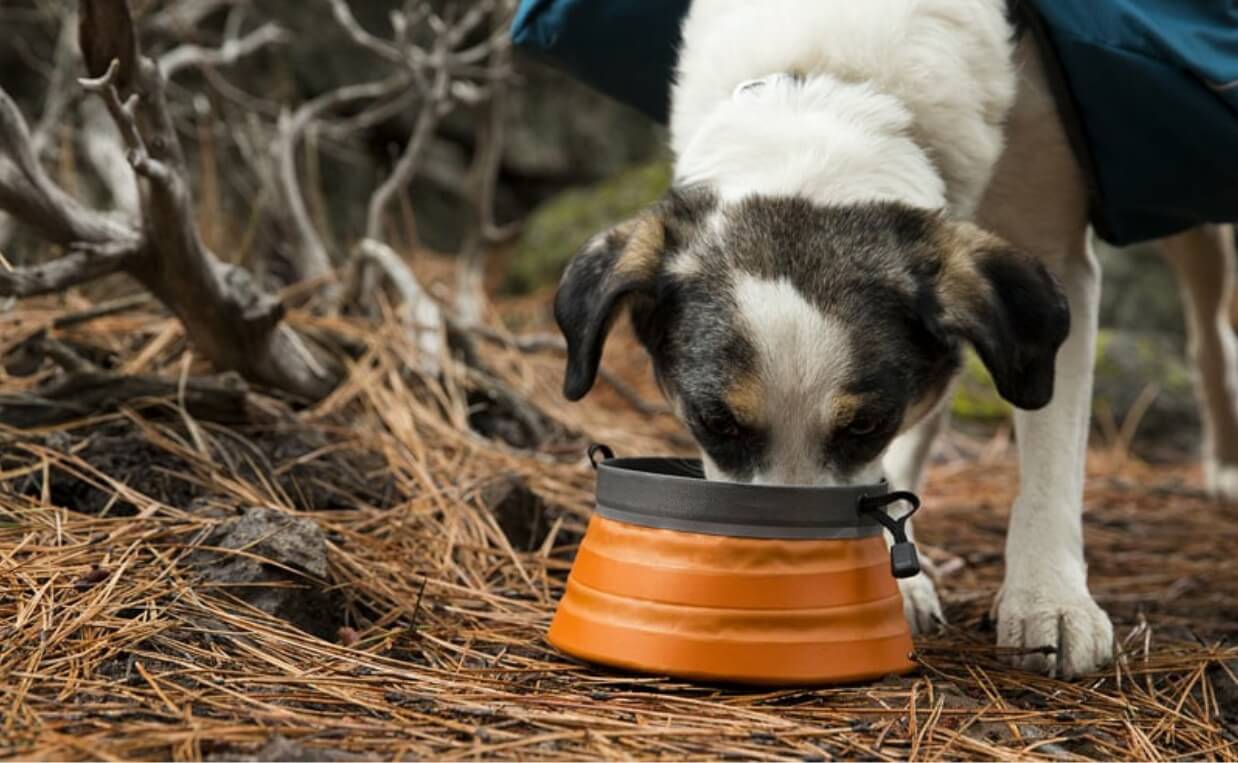
-
Your dog isn’t ready
Besides being too young or having health issues, sometimes dogs aren’t ready because they don’t know how to walk on a leash yet, is too nervous or reactive. Taking a dog hiking before they are ready can reinforce negative behavior and make it more difficult to train them successfully.
What Equipment Do You Need to Take Your Dog Hiking?
You really don’t need much to bring your dog hiking. The basics include:
- A solid 6-foot leash
- A secure collar
- Water
- Snacks
- Excrement bags
- Proper identification
How to Find Hiking Trails Near You
There are several ways to find hiking trails in your area.
- Do a search in Google Maps and look for the green areas. These indicate parks. Then click on the parks to find hiking trails. If they do, search for their pet policy.
- In many states, state parks are dog-friendly and offer great hiking trails.
- Try hiking apps like AllTrails, Gaia GPS and Hiking Project.
- If you’re looking for hiking trails in the Colorado Springs area, check out our free guide to 35 Best Dog-Friendly Hiking Trails in Colorado Springs.
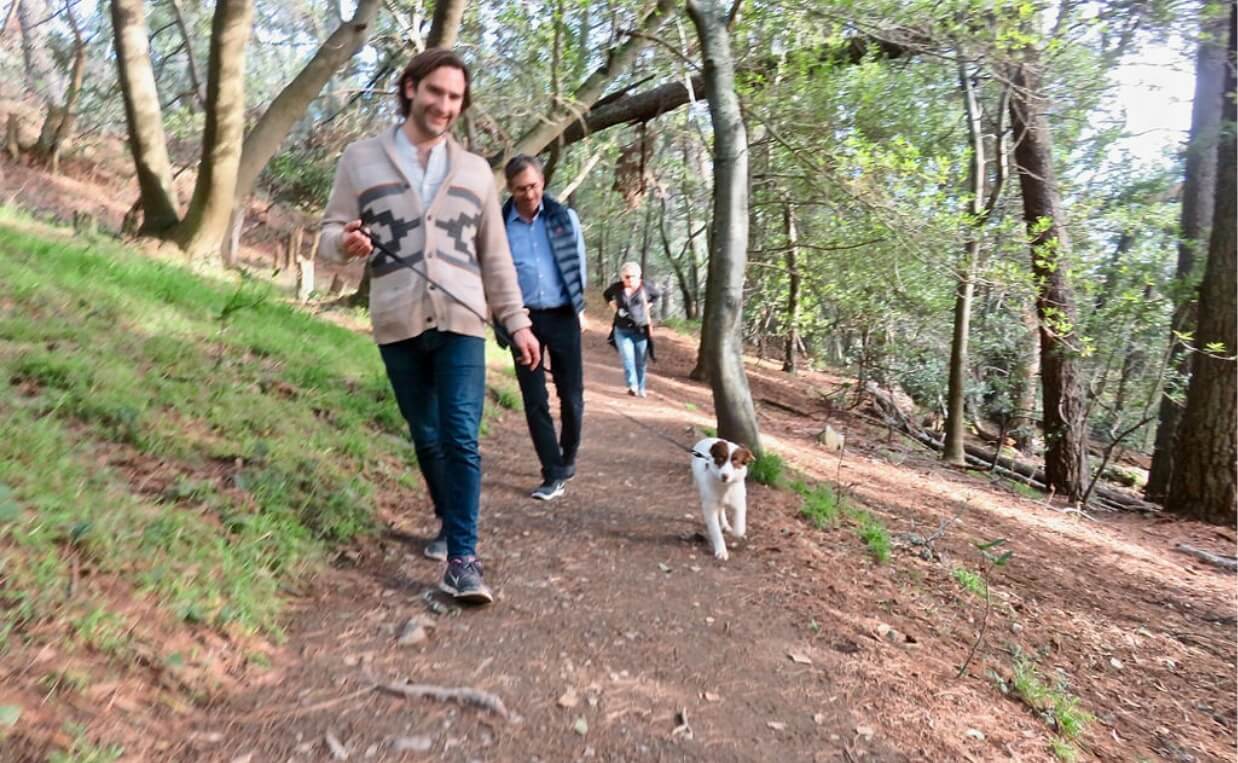
Final Thoughts
Many dog owners love to take their dog hiking. If you haven’t tried it yet, consider the above tips to help you hit the trails with your pup!
Do you enjoy hiking with your dog? What advice would you share with other dog lovers in the Canine Campus community? Please share your thoughts in the comments below…

 13 Tips for an Enjoyable Road Trip With Your Dog
13 Tips for an Enjoyable Road Trip With Your Dog 10 Fun Games to Play with Your Dog to Prevent Boredom
10 Fun Games to Play with Your Dog to Prevent Boredom Why Mental Enrichment is Important for Your Dog
Why Mental Enrichment is Important for Your Dog How to Teach Your Dog to Love Water and Swimming
How to Teach Your Dog to Love Water and Swimming Breaking News: Dogs Start Their Own Social Media Platform
Breaking News: Dogs Start Their Own Social Media Platform






Leave a Reply